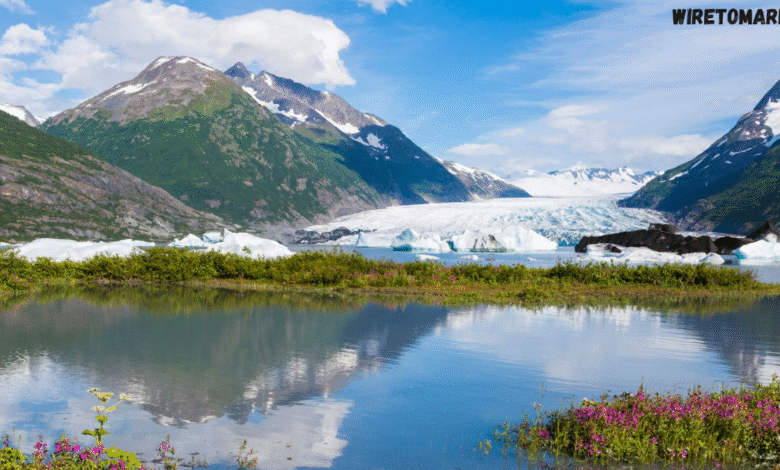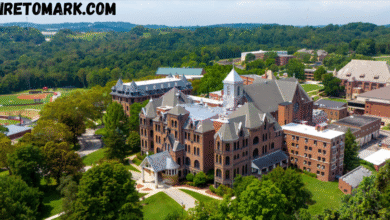Alaska Glaciers A Frozen Wonderland of Natural Beauty

Alaska glaciers are some of the most breathtaking natural wonders on the planet, drawing explorers, photographers, and scientists from across the globe. These massive rivers of ice shape the land, influence ecosystems, and create jaw-dropping scenery that feels almost otherworldly. Whether you’re standing in front of a towering ice wall or cruising past a floating iceberg, the experience is unforgettable.
The story of Alaska glaciers is also the story of time itself. These icy giants have taken centuries, even millennia, to form. Each one carries with it a frozen history, offering insights into the Earth’s climate and geology. For anyone curious about nature’s power and artistry, exploring these glaciers is like stepping into a living museum.
Exploring Alaska Glaciers Up Close
When travelers think of Alaska glaciers, the first images that come to mind are often shimmering ice fields and bright blue crevasses. Visiting these sites in person, however, is even more extraordinary than photos can capture. Standing before a glacier, you can hear the crack of ice, the roar of waterfalls created by melting snow, and the occasional thunderous sound of ice chunks calving into the sea. It’s an experience that appeals to all the senses.
Guided tours and expeditions make it possible to safely explore these icy landscapes. From helicopter rides that land on remote icefields to boat cruises that pass near massive tidewater glaciers, the options are vast. Each type of tour provides a different perspective on just how dynamic and alive these frozen rivers can be.
The Changing Face of Alaska Glaciers
Over the years, Alaska glaciers have become powerful symbols of climate change. While they remain awe-inspiring, many of them are retreating faster than scientists once expected. Walking through valleys where glaciers once stood, visitors can see how dramatically the environment is shifting. This visual reminder makes an impression on everyone who witnesses it.
Scientists often study Alaska glaciers to better understand global climate patterns. By drilling into the ice, they can analyze layers of snow and trapped air bubbles, which reveal information about past temperatures and atmospheric conditions. These records are invaluable for predicting how our climate may change in the future.
Wildlife and Ecosystems Around the Glaciers
The regions surrounding glaciers are home to some of Alaska’s most iconic wildlife. Bears, moose, mountain goats, and bald eagles often roam near glacier valleys, while marine mammals like seals and whales thrive in waters cooled by glacial melt. These animals depend on the unique environment created by glaciers for food, shelter, and survival.
The ecosystems shaped by glaciers are both fragile and resilient. Meltwater streams provide nutrients that enrich the soil and feed rivers, which in turn support fish populations such as salmon. The intricate connection between ice and life shows just how essential these frozen landscapes are to the larger natural world.
Cultural and Historical Connections
For Indigenous communities in Alaska, glaciers are more than just ice. They are deeply tied to cultural traditions, stories, and beliefs. Generations have passed down legends that describe glaciers as living beings, capable of listening and responding to human behavior. These traditions remind us that glaciers are not only geological marvels but also cultural treasures.
In addition to Indigenous heritage, explorers and settlers throughout history have been fascinated by Alaska glaciers. Early expeditions often viewed them as obstacles, while today they are celebrated as destinations of beauty and inspiration. The cultural significance of these glaciers continues to grow as more people travel to experience them.
Adventure Opportunities Among the Glaciers

Adventure seekers find no shortage of excitement when it comes to exploring Alaska glaciers. Activities like ice climbing, glacier hiking, and dog sledding offer unique ways to immerse yourself in the frozen wilderness. Each activity provides both physical challenge and a chance to witness natural beauty up close.
For those who prefer a less strenuous experience, glacier cruises and scenic flights offer breathtaking views without demanding much effort. These activities make glaciers accessible to travelers of all ages and abilities, ensuring that everyone can enjoy the magic of these frozen giants.
Photography and the Art of Ice
Photographers often describe Alaska glaciers as living canvases of light and color. The way sunlight bounces off the ice creates shades of blue, white, and gray that shift throughout the day. Every angle offers something different, whether it’s the sharp edge of a crevasse or the sweeping view of an icefield.
Capturing the movement of glaciers, such as the calving of icebergs, requires patience and timing. These moments highlight the raw power of nature and remind us that glaciers are constantly in motion. For artists and storytellers, glaciers provide endless inspiration.
The Future of Alaska’s Icy Giants
Looking ahead, the future of Alaska glaciers depends heavily on how our planet addresses climate change. While some glaciers may continue to retreat, efforts to reduce greenhouse gas emissions could help slow the process. Protecting these landscapes is not only about preserving natural beauty but also about safeguarding ecosystems and cultural heritage.
Travelers can also play a role by practicing sustainable tourism. Visiting glaciers with responsible tour companies, minimizing waste, and respecting wildlife ensures that future generations will be able to experience the same wonders we see today.
Conclusion
Alaska glaciers stand as timeless testaments to the planet’s beauty and power. They shape landscapes, inspire cultures, and support ecosystems that thrive in icy conditions. While they face modern challenges, they remain some of the most stunning natural wonders on Earth.
FAQs About Alaska Glaciers
What is the best time of year to see Alaska glaciers?
The best months are typically late spring through early fall. During this time, the weather is more favorable, and many tours operate daily, offering different ways to experience the ice.
Are Alaska glaciers accessible to everyone?
Yes, accessibility varies. Some glaciers are easy to view from the roadside, while others require a boat, flight, or hike. There are options for every traveler, from casual sightseers to hardcore adventurers.
Why are Alaska glaciers important to the environment?
Glaciers provide freshwater, regulate ecosystems, and influence sea levels. They are a crucial part of Earth’s climate system, making their preservation essential.
How many glaciers are in Alaska?
Alaska is estimated to have tens of thousands of glaciers, though only a small portion of them are named. Each glacier adds to the state’s rich and varied landscape.
Can glaciers grow again after retreating?
Yes, under the right conditions glaciers can advance. However, current warming trends make this less common, which is why protecting them is so critical.



